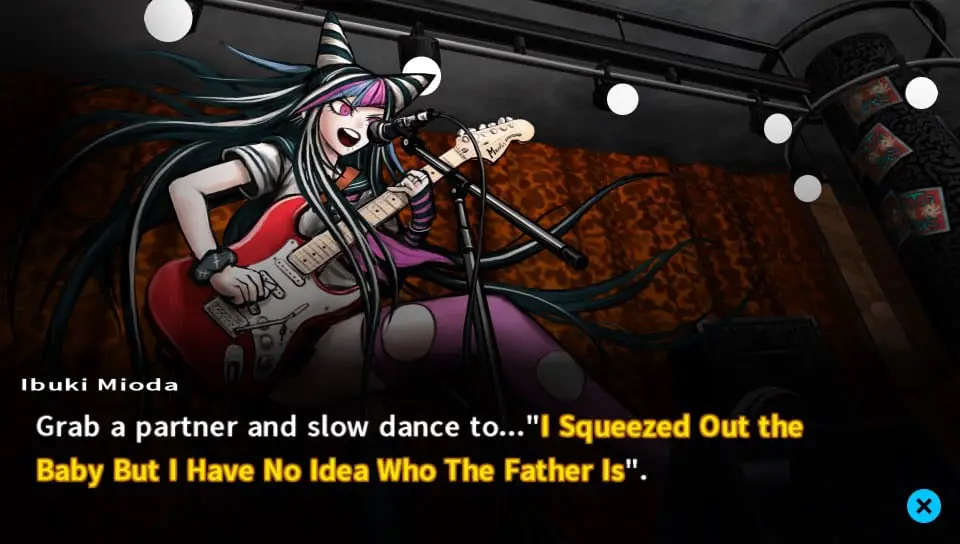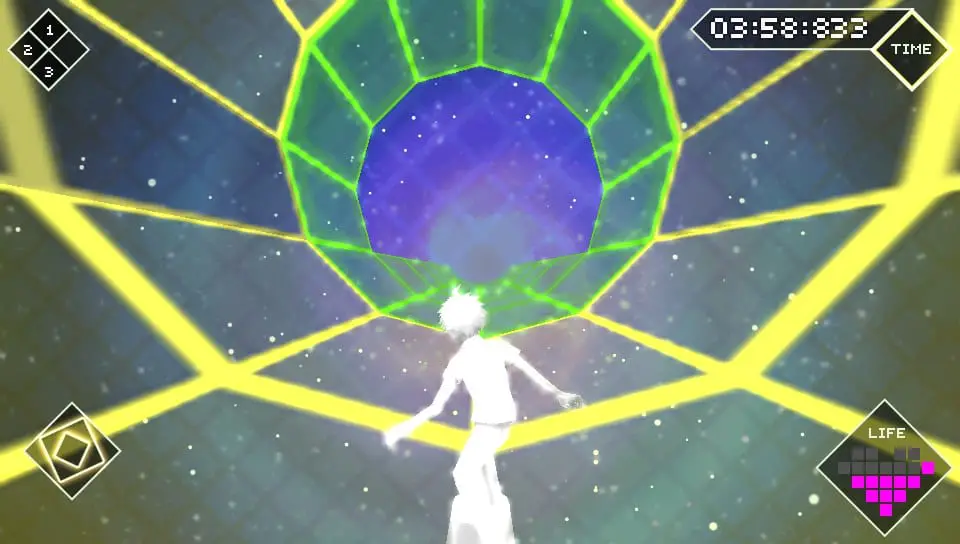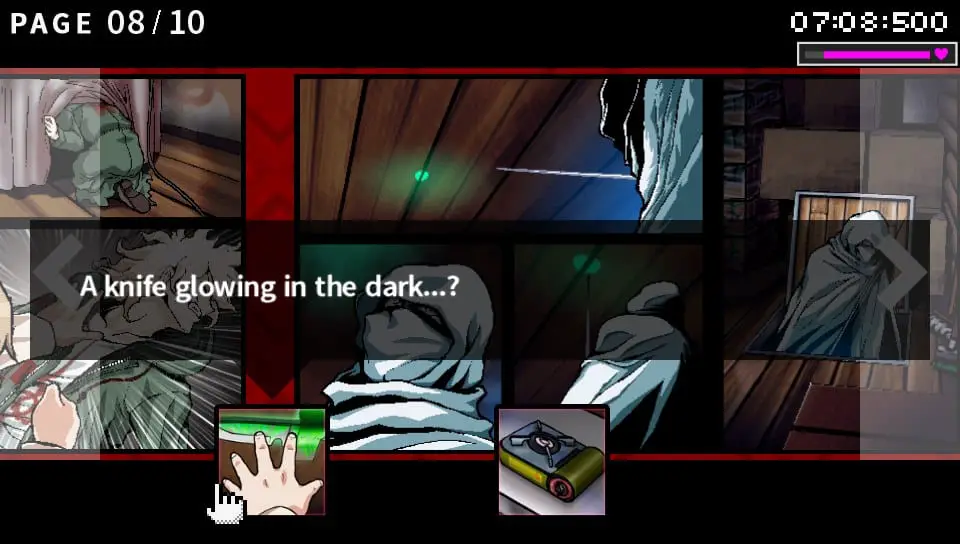Survive for the Ultimate Hope.
It’s your first day at school. You’re excited; after all, it’s a prestigious academy, and you were lucky to get in, being considered part of the world’s Ultimates–a group of people who are the best at their specific talent. You open the door…
And then wake up on a tropical island.
So begins Spike Chunsoft’s Danganronpa 2: Goodbye Despair for the Playstation Vita. Obviously, the island is no safe haven to the game’s characters, and soon they’re faced with a problem: kill, or be killed. When a classmate is killed, the others must investigate and figure out through trials who was the murderer, or face execution. These execution scenes are gorgeous, taking a more manga-esque style into the cutscenes and brutally taking out each murderer; they’re twisted and yet beautiful at the same time, and very much belonging solely to Danganronpa.

It’s the same basic premise as the first game, Danganronpa: Trigger Happy Havoc. Make no mistake, though–while much of the gameplay is the same, Danganronpa 2 doesn’t suffer from it. Twists from the first game are thrown out in the opening hours of this entry, derided in-universe by the villanous-yet-ridiculous Monokuma (he’s back!). Characters serve a few of the same archetypes–the Ultimate Yakuza in this game mirrors the standoffishness of Danganronpa‘s Byakuya, and the Ultimate Gymnast shares many physical similarities with Aoi Asahina–but for the most part they’re all separate personalities. Once again, we’re given a host of Ultimates, including not just the Gymnast and Yakuza, but also the Ultimate Gamer, Ultimate Cook, and Ultimate Princess. They all have their own quirks, from the Ultimate Breeder’s love for his four hamsters and the occult to the Ultimate Princess’s obsession with Japanese dramas.
It’s very anime, and the first act of the game has a lot of fanservice scenes, which can definitely be offputting. I can’t fault anyone for not being interested in Goodbye Despair from the surface issues, but they’d be missing out on an intriguing, compelling game. I will throw out there, though: I strongly suggest players first complete Trigger Happy Havoc. As stated above, several twists from that game are spoiled nearly immediately, and plot elements are referenced multiple times. It’s not strictly necessary, but it lends a lot to the game to do so.
Just like the previous game, gameplay switches between exploration and class trials. Instead of solely working in first-person, though, Goodbye Despair is given a world map of sorts, where players can run on a 2D plane as the game’s protagonist Hajime–think Odin Sphere, kind of. In each locale, characters pop up and can be selected via touch screen or aiming reticule, and certain environs allow for 3D exploration. It might sound a little disjointed, but it’s not. Every inch of Jabberwock Island–this game’s setting, as opposed to Hope’s Peak Academy from the previous game–meshes with the others, and while each portion of the island has a distinctly different theme, bright colors and a great soundtrack keep the game feeling coherent. Some tunes are reused from the previous game, but they still work here, and the added tracks keep up the quality. Voice acting is better all around; while a few people weren’t quite as compelling as they could have been, most were deliciously over-the-top, befitting of the game’s wackiness.
While exploring, players control Hajime and can spend time with his classmates, akin to Persona‘s Social Links. It helps a lot to flesh out the cast, and also helps to gain credit and purchase skills from Monokuma’s “good” counterpart, Monomi. These skills can then be used in the Class Trials to power up attacks, speed up dive time, or increase influence over the Ultimates.
Sounds confusing?
It is, a little bit.
Class Trials take place whenever a character is murdered. After investigating the crime scene, the characters meet up in a circular courtroom to hash out their versions of events and eventually end up with the truth of the matter–or face death. It’s very Phoenix Wright in concept, but in execution it becomes something all its own. Where Phoenix Wright is straight-up logic-based strategy, Goodbye Despair takes many elements from its predecessor, Trigger Happy Havoc. There’s the Nonstop Debate, the Closing Argument, and the Hangman’s Gambit, all from the previous game, but added to Goodbye Despair are multiple other modes.
Trials proceed essentialy as a set of minigames, with the basic Nonstop Debate allowing Hajime to use evidence to literally shoot down contradicting statements, or, in this game, agree with them as well. The Hangman’s Gambit has been changed from Trigger Happy Havoc, serving as a sort of shooting/matching game, where players choose letters to bring a term to Hajime’s mind and complete his train of thought, matching up colors and stopping different letters from colliding. The Panic Talk Action plays like a rhythm game, having players press buttons in time with the music in order to shoot down statements and calm down adversaries to get to the heart of a matter.

There’s also the Rebuttal Showdown, which acts similar to the Nonstop Debate but focuses much more on “cutting down” statements before refuting them, and the Logic Dive, completely new to the game. It’s almost like a snowboarding game, sending a featureless Hajime down a tube, dodging obstacles and jumping over gaps before taking certain routes to arrive at the right conclusion. It’s probably my favorite of the minigames.
Finally, there’s the Closing Argument at the end of every case, summarizing the events and finally exposing the killer through completing a comic book. It’s been changed a little from Trigger Happy Havoc, with hints on each blank space and bigger icons to more clearly illustrate what it’s trying to convey.
It sounds hectic, but it all makes sense in context, and makes for quite the intriguing game. After Trigger Happy Havoc‘s unfortunate lack of difficulty, I set mine up to the harder mode in Goodbye Despair, giving me more evidence options in the Nonstop Debate, amongst other difficulty changes. It definitely did increase the difficulty, which was welcome, though the cases in this entry were harder in general than before. I rarely figured out who the killer actually was before Hajime did, and the time where I did left me in tears.
The Class Trials aren’t what works best about Goodbye Despair. While solving each murder is at the core of the game, the most compelling aspect is unraveling the main mystery: why were the Ultimates taken to Jabberwock Island? Why were they forced to kill each other? What exactly happened to the outside world to allow something this horrific to happen?

I won’t spoil any of it here; suffice it to say that it’s a doozy, well worth playing.
Goodbye Despair also includes an “Island Mode”, which allows players to socialize with the Ultimates without the threat of murders, though at times they’ll still reference events from the game. It also has a minigame mode called Magical Miracle Girl Usami, an action-esque game giving players control over Monomi and fighting off Monokuma’s inventions that roam the islands. It’s not the best mode, but it’s fun for a short distraction.
Finally, upon completion Goodbye Despair unlocks a novel called Danganronpa IF, an alternate look at what could have happened in the first game had several events happened differently. I haven’t read it yet, because it ties into another novel from the franchise, Danganronpa Zero, which has seen no official English release but multiple fan-translations available online.
Danganronpa 2: Goodbye Despair is a hard game to sell. It’s quirky, jumping from slapstick to horrific within moments. It’s very anime at times, and yet sometimes takes itself entirely seriously. It’s a game in which murder investigations and over-the-top executions can exist alongside demonic hamsters and toilet humor. Despite its oddities–and perhaps even because of its oddities–I found the game to be incredibly compelling. The plot had several huge twists that I absolutely loved, and while I was frustrated at the logic presented on occasion, solving murders never felt completely unfair. After completing it, I was left begging my empty bedroom for a sequel.
Good
- Compelling gameplay;
- Enthralling story;
- A great mix of slapstick and serious; refreshingly off-beat.
Bad
- Voice acting is hit-or-miss;
- Logic can be frustrating when you’re a step further than the game;
- Unnecessary elements of fanservice can turn people off.
Play it if: you played the first entry in the series, you’re looking for something off-beat, or you’re craving a great mystery game.
Danganronpa 2: Goodbye Despair was completed in approximately two months, over the course of around 26 hours. It is available for the Playstation Vita and was purchased at retail for $40USD. It was developed by Spike Chunsoft and published by NIS America.

